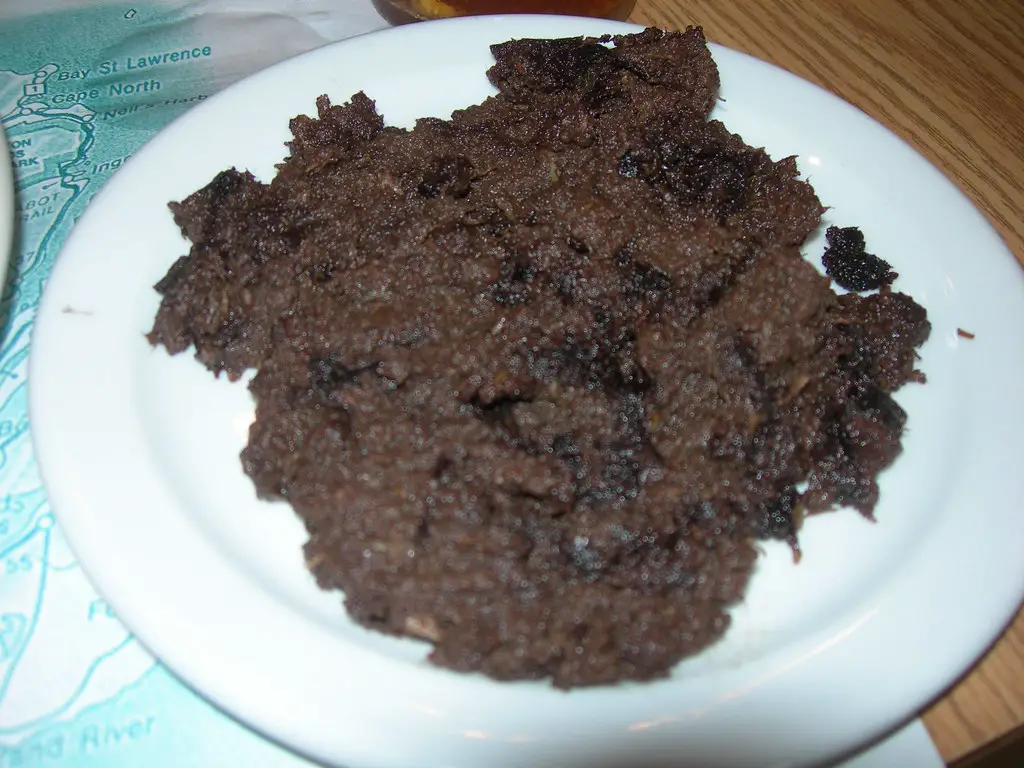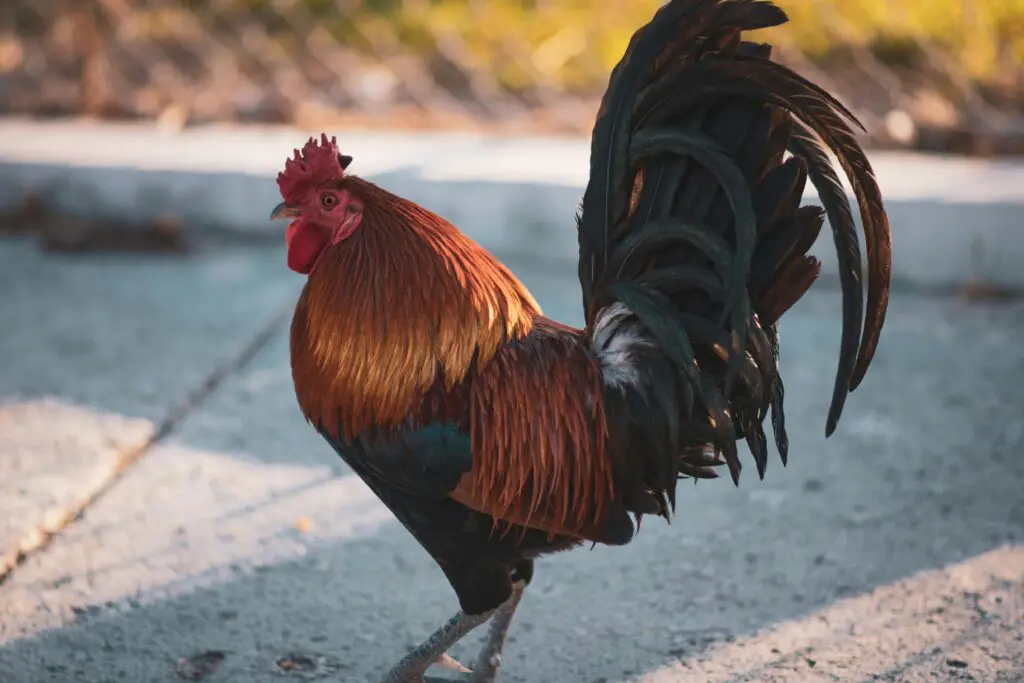1. Peacock

In royal courts, serving up a whole roasted peacock was the height of culinary prestige. The bird would often be cooked, then redressed in its own feathers for dramatic presentation, sometimes even with gilded beaks or glittering eyes. It wasn’t just food, it was theater. The taste? Not exactly something you’d write home about—tough, gamey, and a bit bland. But in medieval banquets, it symbolized wealth and power, not flavor. You didn’t eat peacock because it was delicious, you ate it because you could. Today, most of us wouldn’t dream of roasting a majestic bird for dinner shares the Vintage News.
Beyond the questionable taste, modern sensibilities about wildlife and conservation would make eating a peacock downright shocking. We tend to admire them for their beauty, not their meat. Plus, preparing one the old-fashioned way would be a logistical nightmare in your average kitchen. Imagine plucking and re-feathering a bird for a Tuesday night meal. And gilding it? That’s more Pinterest craft than recipe. We’ve traded medieval flash for meals we can actually chew without effort. Safe to say peacock is staying firmly off the grocery list explains Quora.
2. Swan

Swan might seem like the kind of bird you admire on a lake, not one you plate up next to potatoes. But in Tudor England, swan was a legit delicacy. It was roasted whole and often stuffed with spices and herbs, though the meat was known to be stringy and a bit greasy. Like peacock, the swan’s appeal was more about the spectacle. Royals loved a showy feast, and what’s showier than serving up a literal symbol of grace and elegance? It was all about status, not satisfaction. You weren’t expected to ask for seconds. You were expected to be impressed shares ReMIND Magazine.
These days, most of us are horrified at the idea of eating swan, especially in places like the UK where they’re protected by law. Besides, who would even know how to cook one? It’s not like the local butcher stocks swan breast adds the New York Times. We’ve come a long way from roasting royal birds just to prove a point. Now we’d rather photograph them gliding across a pond than serve them at a wedding. Graceful, yes. Grub? Not anymore.
3. Beaver Tail

Yes, you read that right. In certain royal courts, especially in French and Eastern European regions, beaver tail was considered not only a delicacy but also an acceptable “fish” during Lent. Because of its scaly appearance, it technically passed for fish under Catholic fasting rules. And while it might sound totally bizarre today, people back then truly thought it was a clever workaround. The tail was fatty, rich, and supposedly had a flavor somewhat like pork. It was often boiled or roasted and enjoyed in its own right. This wasn’t just peasant food either—it appeared in elite feasts.
Nowadays, the idea of eating a beaver tail seems like something out of a survival show. It’s just not a food people associate with elegance anymore. We have access to so many other proteins that chewing through a chunk of fatty rodent appendage seems absurd. Not to mention, beavers are often thought of as adorable woodland creatures, not entrees. The whole fish loophole feels more like a trivia fact than a culinary strategy. For modern diners, this dish is extinct for good reason.
4. Dormice

The ancient Romans, particularly in the wealthier classes and courts, were big fans of edible dormice. These tiny rodents were fattened up in special ceramic jars and then roasted or stuffed with nuts and honey. It wasn’t just for sustenance—this was a true gourmet treat. Guests at banquets would be served these little creatures like hors d’oeuvres. They were rich, fatty, and sweet, almost like a cross between a meatball and dessert. In some circles, they were even dipped in poppy seeds for flair. Tiny, cute, and weirdly indulgent.
Try to serve dormice at a dinner party today and you’d likely clear the room. Modern diners balk at the idea of eating rodents, no matter how much honey you drizzle on top. Our tastebuds have evolved, and so have our food ethics. Dormice are now seen as part of the ecosystem, not the menu. Even in places where they’re still technically edible, they’ve fallen out of favor. In terms of royal delicacies, this one might be the hardest to stomach now. It’s more likely to be found in a museum exhibit than a restaurant.
5. Whale

Back in the day, whale was considered both useful and luxurious. The meat was served at royal banquets, and it came with an air of exoticism and adventure. Sometimes it was boiled, sometimes it was dried and preserved, but either way, it was seen as an elite indulgence. Like beaver, it was also often classified as “fish,” allowing it to be eaten during fasting periods. The blubber was prized for its high fat content, and the meat itself was dark and dense. It wasn’t something you’d eat casually, but it did make a statement. After all, hunting a whale wasn’t exactly easy.
Fast forward to today and eating whale is highly controversial, if not outright banned in many places. Conservation efforts and shifting ethical norms have taken it off most menus. It’s hard to imagine a dish with that much ecological baggage appearing on a plate now. Instead, whales are symbols of ocean conservation and awe. We’d rather save them than savor them. What once screamed royal opulence now whispers environmental awareness.
6. Calf’s Head

Yes, there was a time when serving a whole calf’s head was not only normal but considered refined. In the 17th and 18th centuries, it was a showstopper at royal feasts across Europe. The head was boiled or baked, then presented whole—tongue, brain, cheeks and all. Often, it was garnished with herbs and sauces to enhance both the flavor and the visual drama. Diners would carve into it as if it were a holiday roast. The texture was soft and gelatinous in places, meatier in others. Not everyone’s cup of tea, but it had fans.
Today, calf’s head is firmly in the “thanks but no thanks” category for most people. Even adventurous eaters raise an eyebrow at the idea. Beyond the obvious ick factor, it’s a dish that feels incredibly dated. It evokes old-world kitchens and long-forgotten rituals. You’re more likely to find it in a historical cookbook than at your local restaurant. And honestly, modern refrigeration and global trade have given us so many better options. Royal or not, we’re not chomping at the bit for bovine skull.
7. Jellied Eel

Jellied eel might sound like a punchline today, but it was once a dish served with pride, especially in British courts. The eels were chopped, boiled in a spiced stock, and then allowed to set into a cold jelly made from their own natural gelatin. The result was a wobbly, savory creation that was eaten cold and often enjoyed with vinegar. While it became more common among working-class Londoners later on, it started out with more noble roots. Eels were plentiful in English rivers and considered a delicacy. The texture, while odd, was seen as luxurious. It was a dish of tradition and heritage.
Modern diners don’t typically go looking for gelatinous fish dishes. The idea of a cold, jiggly eel plate doesn’t exactly whet the appetite. Eels themselves aren’t popular on many menus these days, and the jelly part really seals its fate. We’ve grown used to cleaner, simpler textures and more appealing plating. Today, you’d have to really love history to justify digging in. What once signified class now feels more like a culinary dare.
8. Blood Pudding

Also known as black pudding, this sausage made from pig’s blood, oats, and spices was a fixture in royal breakfasts and feasts. The blend was cooked down into a dense, rich log that was sliced and fried. It packed a lot of protein and iron, and for centuries, it was considered both practical and indulgent. It wasn’t just for peasants—nobles enjoyed it too, often seasoned with nutmeg or cloves. While still popular in parts of the UK and Ireland today, it had a much more widespread appeal in royal circles. It was hearty, filling, and a bit of a status dish. It showed you used every part of the animal, which was considered wise and resourceful.
These days, blood pudding has fallen out of favor in many parts of the world. The very idea of eating blood turns off a lot of people, even if it’s perfectly safe and nutritious. We’re used to sanitizing and separating our food, not diving nose-first into what feels like a medieval survival tactic. It might show up on hipster brunch menus occasionally, but it’s no longer seen as gourmet. It’s got a reputation that’s hard to shake. Unless you were raised on it, you probably won’t crave it. A royal favorite or not, most folks are passing.
9. Lamprey Pie

Lamprey was such a prized food in medieval and Tudor courts that kings demanded it by name. These jawless, eel-like fish were cooked into savory pies with wine, spices, and often a touch of sugar. Despite their snake-like appearance, lampreys were considered rich, luxurious seafood. Even Henry I reportedly died from eating too much of it. The taste was said to be strong and earthy, like a cross between fish and liver. The pies were served at feasts and often gifted between nobles as a sign of favor. It was a meal for someone who had everything.
Today, lampreys are more likely to be studied in biology class than served at a banquet. They’re strange, prehistoric-looking creatures that don’t exactly scream “eat me.” Between the look, the flavor, and the difficulty of preparation, it’s no wonder they’ve disappeared from most plates. Conservation efforts have also limited their availability. What was once royal indulgence is now ecological relic. It’s a pie that history, and our appetites, left behind.
10. Cow Udder

In medieval and Renaissance cuisine, even cow udders had their place at the royal table. The organ was boiled, sliced, and sometimes served with sauces or stewed into rich dishes. It was considered tender and delicate when prepared properly. It might not sound appealing now, but back then, it was part of the nose-to-tail eating philosophy. Waste not, want not—even among the wealthy. Textures ranged from smooth to slightly rubbery. It was often cooked slowly with spices to improve flavor.
Modern eaters rarely, if ever, encounter cow udder on a menu. The very idea prompts a mix of confusion and revulsion. We’ve moved away from using every single part of the animal, especially when it comes to parts so biologically specific. Even the adventurous meat eater might draw the line here. Cooking cow udder is a dying art, and most chefs would rather not revive it. Gourmet or not, it’s just not appetizing anymore.
11. Porpoise

Yes, porpoise once graced royal banquet tables, particularly in medieval England. These marine mammals were caught and served during Lent, when their classification as “fish” made them acceptable under fasting laws. They were typically boiled and served with elaborate sauces. The flavor was supposedly rich and oily, more like dark meat than seafood. While it wasn’t an everyday meal, it was certainly fit for special occasions. Serving porpoise showed off both wealth and religious cleverness. It was the kind of meat you bragged about.
Today, eating a porpoise would be not just frowned upon, but probably illegal in most countries. They’re protected species, and rightly so. Our relationship with marine mammals has changed entirely—we swim with them, study them, and advocate for their survival. The idea of boiling one feels unthinkable now. It’s a dish that history has retired with a firm “never again.” For good reason.
12. Rooster Testicles

Yes, this was once considered a real treat. In some royal kitchens, particularly in France and Italy, rooster testicles were sautéed in butter, wine, or cream and served as a gourmet dish. Known for being tender and mild in flavor, they were considered both an aphrodisiac and a symbol of culinary boldness. The texture was soft, almost custardy, and they were often accompanied by rich sauces. You can still find them in niche restaurants today, but they’re far from mainstream. Back then, they were an accepted part of fine dining. It was about daring and decadence.
Fast forward to today and rooster testicles are solidly in the “you eat what?” category. Most people wouldn’t even know how to recognize them in a butcher’s case, let alone cook them. Cultural norms and modern tastes have shifted us far away from this kind of eating. While some chefs might celebrate the nose-to-tail trend, this particular cut rarely makes the cut. It’s one of those royal foods that stayed in the past. And for many of us, that’s right where it belongs.
